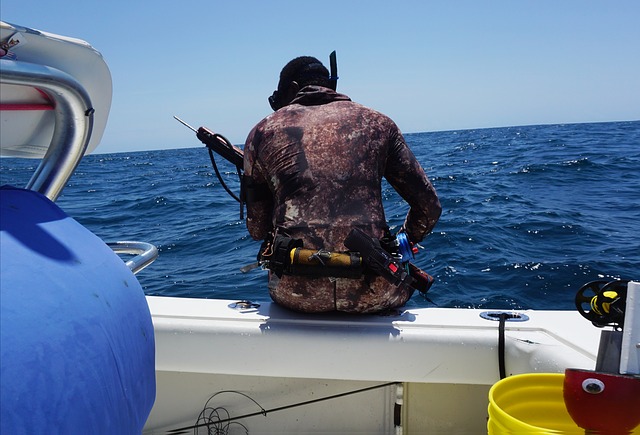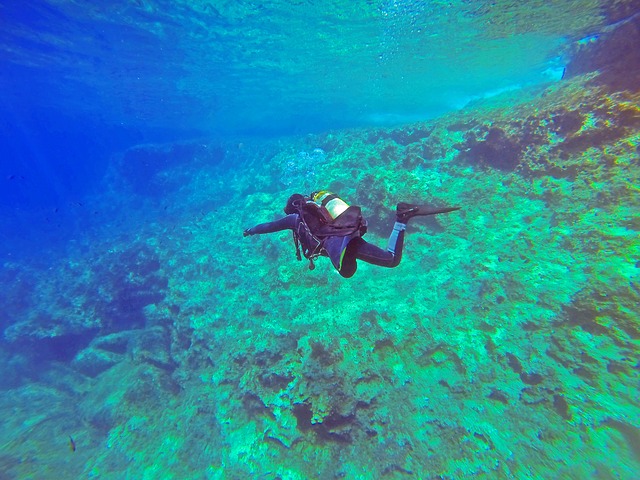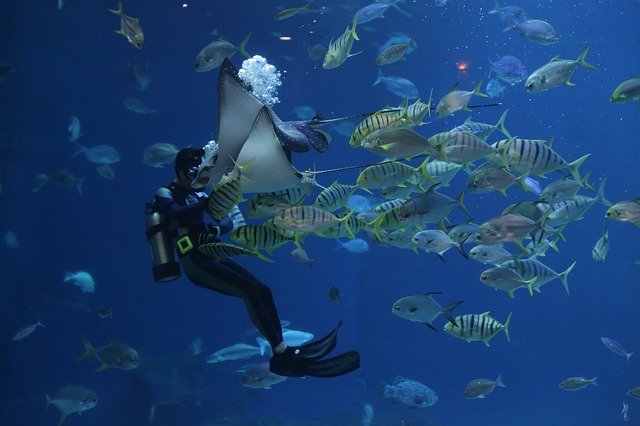Ever heard about spearfishing? No? Well, it is a practice that can be done while using free-diving, snorkeling, or scuba diving techniques; it’s basically a method for fishing underwater using spearguns or slings.
Now that you know a little about it, would you like to try it out? Perfect! But there are some things you need to know before embarking yourself in this adventure. Overall diving is a practice that can become dangerous if the proper cautions are not taken, and with the use of such harmful equipment like the one needed for spearfishing, those cautions do nothing but grow. That’s no reason for you to restrict yourself from this exciting experience, so please let me give you some advice and tips to make the most out of it as possible.

Free-diving
As I said, you will be using free-diving for spearfishing. (How else are you supposed to fish under the water?)
If you don’t really know what free-diving is, it’s basically the art of holding your breath below water. Sounds easy, right? It’s really not. The underwater depths you’ll be getting into will be significant, coming out to the surface won’t be so easy, it’ll probably won’t even be an option; the trick of free-diving is to learn and practice how to do so in the correct way to ensure your safety. If you’re a beginner in all of these aquatic activities and you’ve never been diving before… yeah, it might take a little for you to get the hold of it.

But, hey! Don’t give up hope on this yet. It’s a matter of practice after all. One of the aspects you’ll have to learn is to equalize and how to do so. This means that you’ll have to learn to regulate the pressure in your middle ear. It’s not as difficult as it may sound, the only thing you need to do is to close your nose and blow gently – gently, take note of that – until you feel a popping sensation. If you blow too hard, it can damage your eardrums.
Holding your breath
On spearfishing, the fishes aren’t simply going to come swimming to you. They are kind of afraid of pointy objects.
Besides you are the one that’s in their neighborhood at the moment. They’re the ones free to come and go as they wish.
Most of them will probably be located near the seabed, and you’ll have to master the equalizing when the time comes for you to see what type of fish it is and if you can hunt it or not, (some fishes are protected species in certain countries), and to get in shooting range.
Once you see yourself able to catch the fish and are ready to pull the trigger, keep calm. Fishes can sense your nervousness and whatever weird vibes they get from you, they will scare them away. So here’s a spearfishing to-do list: Relax. Go with the flow. Shoot. Repeat.

Follow your guide’s instructions
Like everything in life, this kind of practice comes with a few dangers and a few safety rules that one needs to follow to keep safe. Your guide is there to tell you about them, and stick close to him or her to get whatever help you may need in the future. These that we are talking about here, are the kind of activities that should never, ever, ever be practiced alone or without a guide.
Be careful with the speargun
I know this must look like a no-brainer, but one can never be too careful… Especially while holding a shooting knife under the water.
Keep that thing face down while in the water, would you? And make it so it won’t be even remotely pointing at anything or anyone.
Never lose sight of your group
As I said, these are the kind of things that should never be practiced alone. In fact, there’s a strict “buddy system” rule to follow here; the more buddies, the better.
Never lose sight of your spearfishing group, especially when one of you guys is hunting a fish. Always keep an eye on your friends, but at the same a safe distance from them while you’re preparing yourself to shoot.
Be conscious
Morally and environmentally conscious, I mean. Spearfishing is a sport, okay? Not some kind of merciless “fish massacre”. If you’re doing this, make sure it is for a cause. Eat the fishes you capture, be aware of how you got that food. Also, restricted areas are restricted for a reason, and endangered species are endangered for a reason. This sport has its limits and you should never – and I mean never – cross them.
